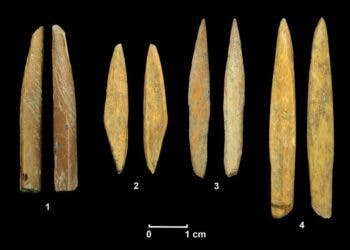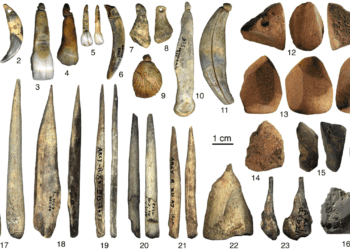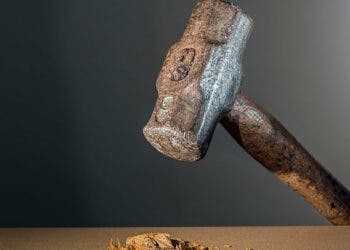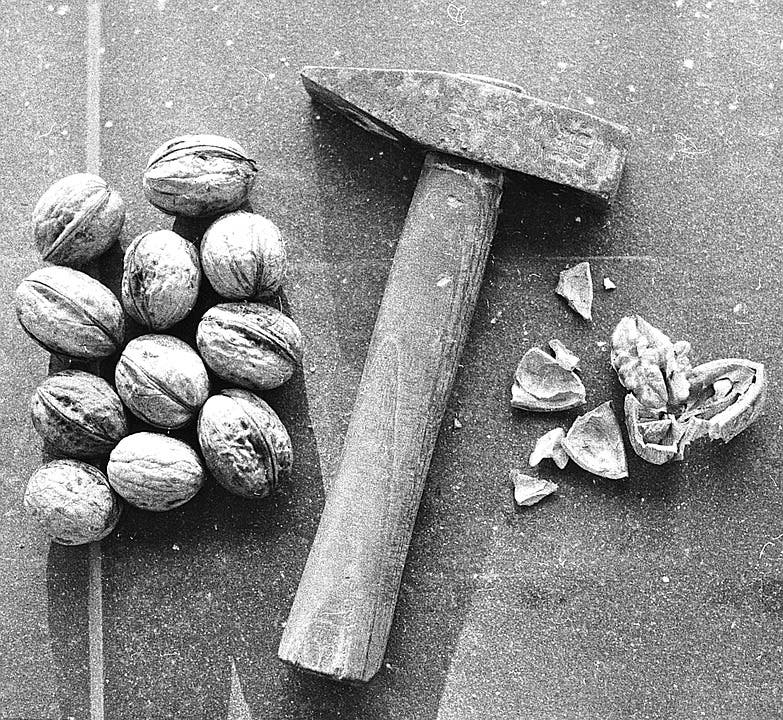A new experiment showed that Goffin’s cockatoos can create tools for specific purposes, by cutting out a piece of cardboard to retrieve an out-of-reach nut. Previously, the birds have created tools out of a piece of wood, but there was debate whether this was done intentionally or was just a fortunate accident.

For all their unassuming, adorable looks, cockatoos are actually pretty smart. In 2012, a cockatoo named Figaro worked out how to retrieve a nut place tentatively out of his reach by crafting himself a tool, presumably to the sound of scientists’ jaws dropping. The bird figured he could tear a long splinter off a piece of wood, then progressively rake the food until it came into grabbing distance. He then showed the other birds how to do it, and they quickly picked up the practice. This suggests that cockatoos can follow a deliberate process of creating tools with a specific design, for specific purposes.
The experiment was met with heavy criticism, however.
“There were questions on whether the elongated shape of the tool was intentional,” says Dr Alice Auersperg at the University of Vienna in Austria, who described Figaro’s behaviour in 2012. “He could just have bitten the material out of frustration and ended up with a functional tool due to the age lines of the wood.”
The issue was that wood naturally breaks apart along its grain, forming an effective nut-retrieving tool. This made it unclear if the animals set out to knowingly fashion the tool, or they just vented their frustration on the block of wood by biting into it, with the fortunate outcome of creating a tool to get them the object of said frustration. To settle the debate, Auersperg and her team tested the cockatoos’ tool-making skills again. Their experiment used four male cockatoos, including Figaro. Each bird was allotted 10 minutes to create a long, thin tool from a set of materials then use it to retrieve a tasty cashew nut placed out of reach. For the task, they received by turns a leafy twig, a chunk of wood, and a cardboard sheet.
All four animals quickly understood they could remove the leaves off the twig to turn it into an effective nut-retriever. Three of the tested birds previously participated in the 2012 experiments, already knew how to tear the block of wood into spinsters, and did so again.
But both of this materials can easily be fashioned into a long, thin tool. Cardboard on the other hand, doesn’t naturally tear into such shapes. Still, Figaro and one other cockatoo were able to craft a tool from the sheet. Rather than pulling bits of cardboard out at random, they made a deliberate series of perforations in the sheet to create the desired shape. They then broke it off, and retrieved the nut.
Auersperg says the cardboard test makes a strong case that the cockatoos can “see” a useful tool in a piece of raw material, then go about crafting it. This would make them them the second family of birds we know of that are capable of fashioning tools, after the behavior was observed in Hawaiian and New Caledonian crows.
Even more impressive is the fact that this process hasn’t so far been observed in wild cockatoos, suggesting that it’s not an instinct-driven process and the birds spontaneously worked out how to craft tools. Careful study of wild birds might in fact reveal that they’re natural tool-makers — but, at this point, both options remain a possibility.
The full paper “Goffin’s cockatoos make the same tool type from different materials” has been published in the journal Biology Letters.






